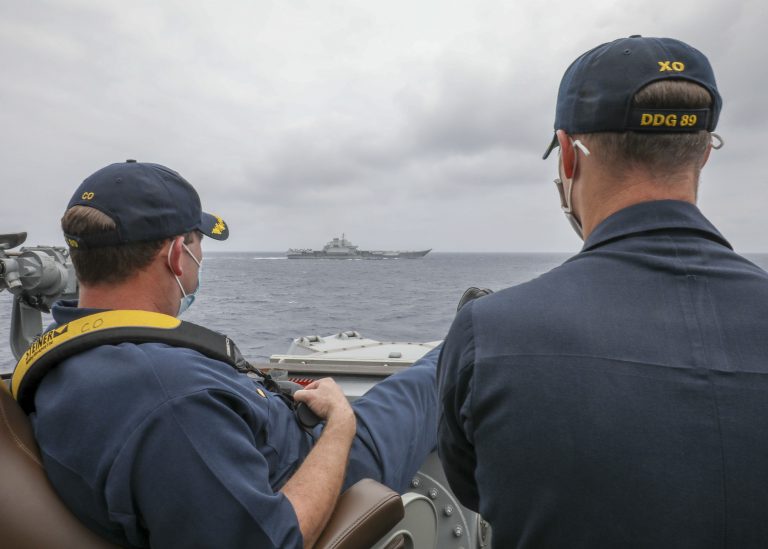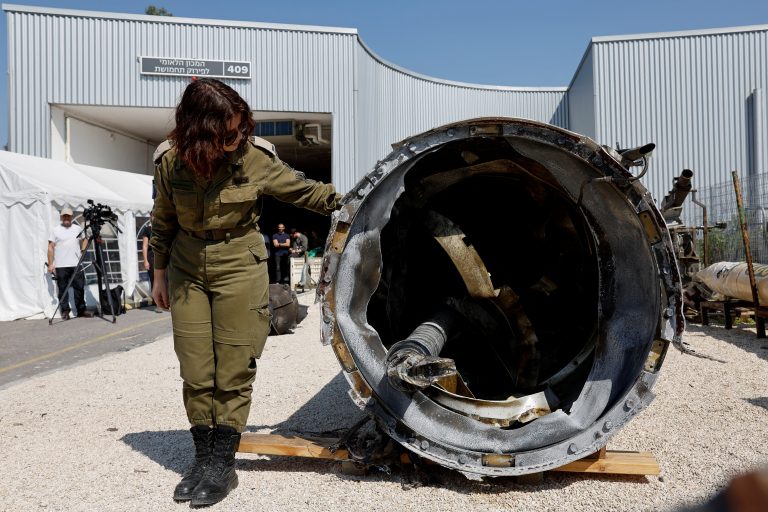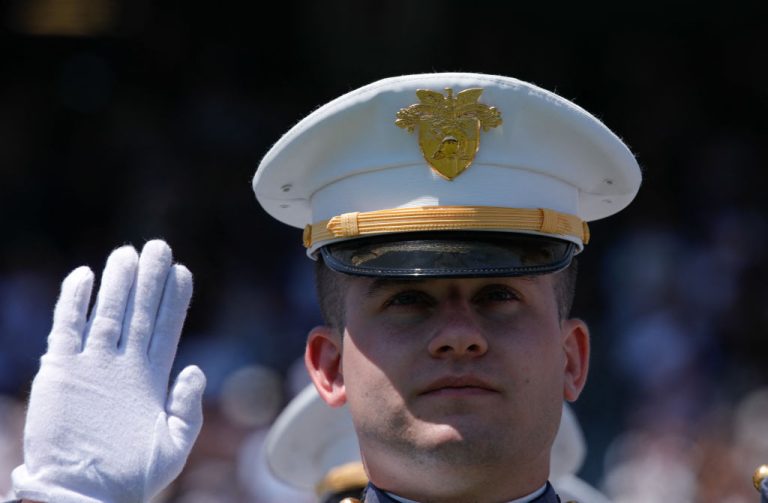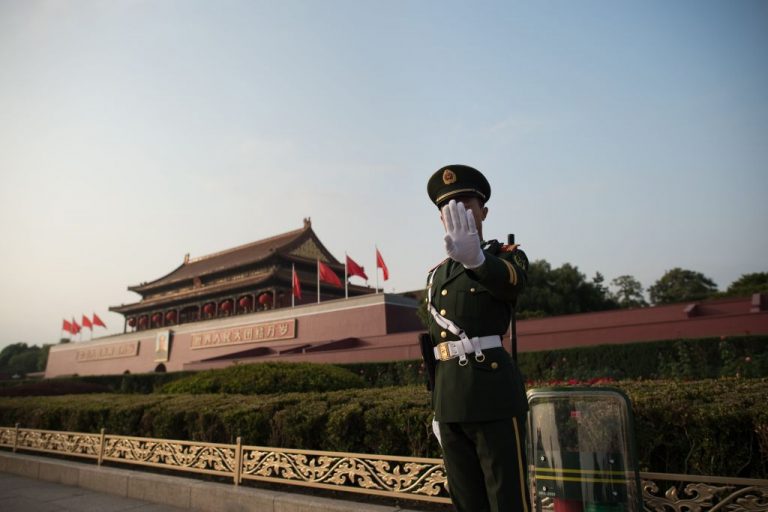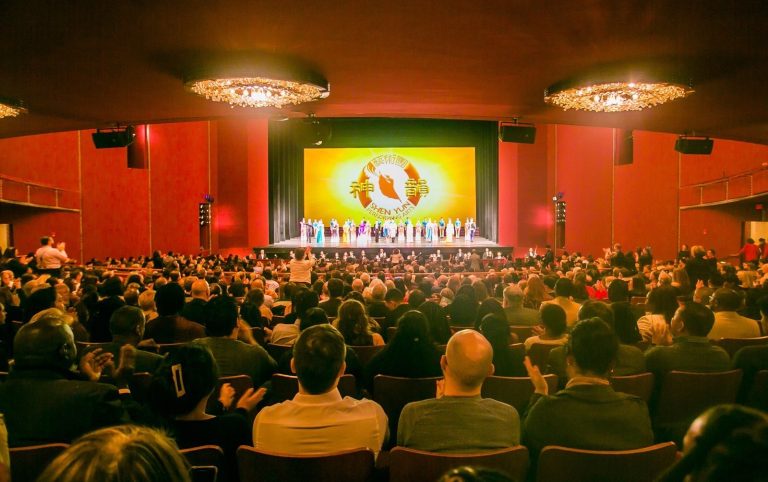Military tensions continue to rise near Taiwan as warships from both the U.S. Navy and the Chinese Communist Party’s (CCP) People’s Liberation Army (PLA) Navy congregated off Taiwan’s southwestern coast.
On April 4, both countries’ aircraft carriers, the nuclear-powered USS Theodore Roosevelt, and the PLA’s conventionally powered Liaoning were both sighted chaperoned by escort ships.
The Liaoning and five escort vessels have been observed cruising through a critical Japanese maritime choke point. Simultaneously, the Roosevelt and two escorts were spotted traveling through the narrow Malacca Strait, past Singapore, and into the South China Sea.
Cognitive Warfare
The U.S. Navy released a photo that showed one of its guided-missile destroyers, the USS Mustin, shadowing the Liaoning group while the ship’s Commander was photographed with his feet up on the decks while the Deputy Commander was looking on.
The photo showed the Mustin’s command officer, Commander Robert J. Briggs, and his deputy Commander Richard D. Slye watching the Liaoning, a few thousand meters away.
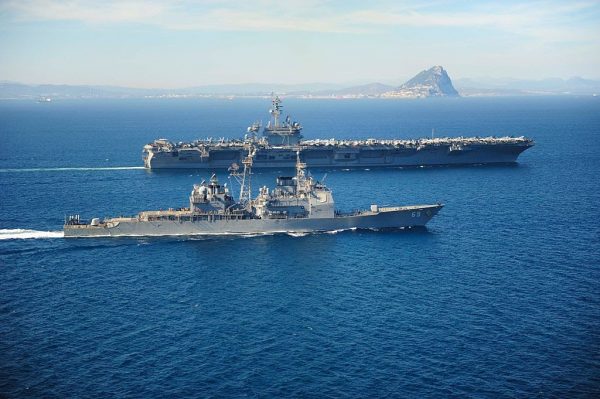
Success
You are now signed up for our newsletter
Success
Check your email to complete sign up
Lu Li-Shih, a former instructor at Taiwan’s Naval Academy in Kaohsiung, gave the following analysis of the photograph in comments to South China Morning Post, “This staged photograph is definitely ‘cognitive warfare’ to show the U.S. doesn’t regard the PLA as an immediate threat.”
“In the photo, Commander Briggs looks very relaxed with his feet up watching the Liaoning ship just a few thousand yards away, while his deputy is also sitting beside him, showing they take their PLA counterparts lightly,” Lu added.
The photo indicated that the U.S. warship kept a “very safe distance” while shadowing the Chinese strike groups, said Zhou Chenming, a researcher with the Yuan Wang think tank, a Beijing-based military science and technology institute in an interview with SCMP.
“Both sides understand that there is a big gap between the U.S. and Chinese aircraft carrier strike groups,” Zhou said.
Japan frets over Beijing’s new law
Meanwhile, Japan spotted the PLA carrier group, which includes the Liaoning, one Renhai class stealth guided-missile destroyer, two Luyang III class guided-missile destroyers, one Jiangkai II multi-role frigate, and one Fuyu class fast combat support ship — maneuvering the waterway between Okinawa and Miyako Island and heading toward the Pacific on Saturday morning.
The joint staff said in a statement published on Sunday that Japan has sent the destroyer JS Suzutsuki, a P-1 maritime patrol aircraft, and a P-3C anti-submarine-warfare patrol aircraft to “gather information and monitor the movements of the Chinese vessels.”
Tension prevails between the PLAN and the Japanese Maritime Self-Defence Force in the East China Sea after a new law enacted in mainland China grants the CCP’s military force to use weapons against foreign ships that Beijing regards as illegally entering its waters.
Reaffirming the US-Philippines alliance
According to the Pentagon, U.S. Defence Secretary Lloyd Austin reaffirmed a so-called “shared commitment” with his Philippine counterpart, Delfin Lorenzana, via phone conversation after PLAN vessels massed the Whitsun reef.
The nations are proceeding with joint exercises after the PLAN incursed on Phillipine territory with hundreds of vessels in the South China Sea.
Beijing described the 200 vessels near Whitsun Reef as “normal and legitimate,” and said that its officials have close communication with the Philippines. While the Philippines described the ships as a maritime militia.
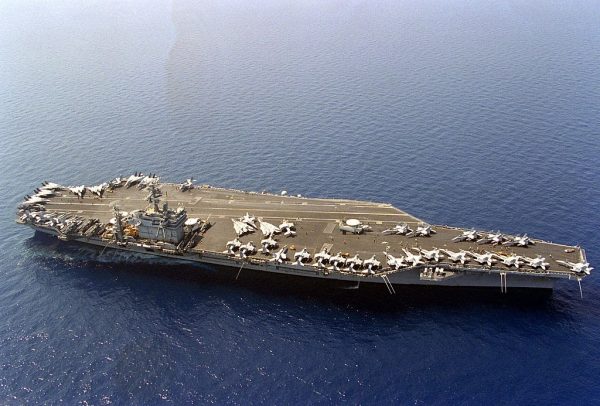
Last week, the Philippines’ leading media and entertainment organization ABS-CBN reported that two Chinese vessels armed with missiles drove a local ship carrying its news crew away near the island province of Palawan. The host said it was the first recorded instance of a military maneuver against a civilian vessel.
Macau-based military observer Antony Wong Tong commented on CCP aggressions in the area, “The massing of China’s maritime militia vessels at Whitsun Reef implies that Beijing may attempt to resume its land reclamation project in the Spratly Islands because of the geostrategic location of Whitsun Reef, which is located between Fiery Cross Reef and Mischief Reef,” according to a SCMP report.
“China realized Mischief is too far away from the mainland and too isolated in the Spratlys, but land expansion based around Whitsun Reef will solve the problem,” Wong added.
Follow us on Twitter or subscribe to our email list



